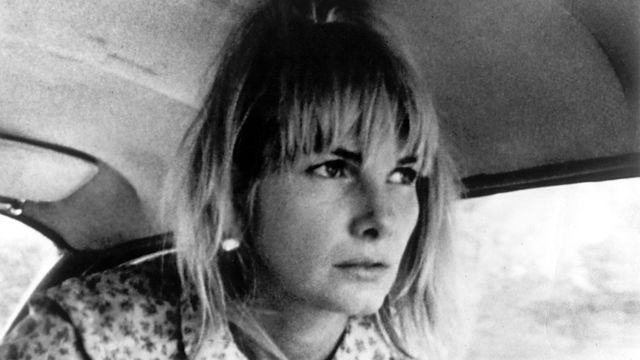
Wanda / The Visitors
- This is a past program
The UCLA Film & Television Archive presents classic film and contemporary cinema in the Hammer's Billy Wilder Theater.
Part of the series American Neorealism, Part One: 1948–1984
Wanda
On the surface, Barbara Loden might be the least likely candidate to have produced one of the absolute masterpieces of American cinema. Beginning her career as a nightclub dancer and pinup girl, she faced both class and gender discrimination throughout her life. By her own admission, she had been raised in an environment wherein a woman’s only chances for self-improvement were through attachment to a man. It’s precisely from these struggles that Wanda grew. It’s ironic and perversely appropriate that Loden was, initially, known for her marriage to Elia Kazan and for her roles in his films Wild River (1960) and Splendor in the Grass (1961) as well as his stage production of After The Fall (1964). Loden subsequently withdrew from public life alongside Kazan before taking up the writer-director’s helm of Wanda, her lasting cinematic legacy. Now cited by Jonathan Rosenbaum as one of the 100 greatest American films ever made, Loden’s neorealist gem centers on her brilliant performance as a rural Pennsylvanian housewife on a flight to nowhere, traveling through an American landscape of decrepit factories, two-lane wastelands, and ratty motels. Dragged seemingly by the wind into a relationship with small-time crook Michael Higgins, Wanda floats through her own life as if witness to it—a view of desperation filtered through a tinted windshield.
Loden’s creative partner in the production was cinematographer-editor Nick Proferes, who, crucially, emerged from the then-vital tradition of cinéma vérité. With its location shooting, existing light cinematography, long takes, and extensive use of non-actors, Wanda functions at one level as pure documentary. Loden’s and Higgins’s brilliant acting performances are held in perfect balance by both the non-actors who surround them and Proferes’s photography of rural and small-town Pennsylvania. Proferes’s vérité origins ultimately fuse with Loden’s expert direction in one of the most authentic visions of middle America committed to screen. UCLA’s 35mm restoration is blown up directly from the previously lost 16mm camera rolls, bringing a sharper and truer rendition of Wanda’s unique 1970s color palette than has previously been possible. Digital tools have been used to selectively repair damaged sequences in the original materials. (1971, dir. Barbara Loden, 35mm print from the UCLA Film & Television Archive, color, 105 min.)
Restored by the UCLA Film & Television Archive, in cooperation with Televentures Corp and Parlour Pictures. Preservation funded by The Film Foundation and GUCCI.
The Visitors
Loosely adapted from a Daniel Lang’s Casualties of War, director Elia Kazan’s penultimate film is ostensibly about the aftermath of Vietnam. Yet in a deeper way, this harrowing work also reflects on Kazan’s own experiences with HUAC. Patrick McVey stars as a veteran who is visited by two ex-Army buddies on whom he had informed for war crimes, and the film chronicles in horrific detail what ensues after their unexpected arrival. On a production level, Kazan was inspired by his wife Barbara Loden and her work on Wanda, and engaged Wanda cinematographer Nick Proferes to shoot his follow-up. Kazan’s son Chris Kazan wrote the script, and the 16mm filming took place in their own house. This overlooked work in Kazan’s filmography is at once flawed and devastating, offering a vivid display of the demons that haunted one of America’s greatest directors. (1972, dir. Eli Kazan, 35mm, black and white, 88 min.)
Print courtesy of the Academy Film Archive













